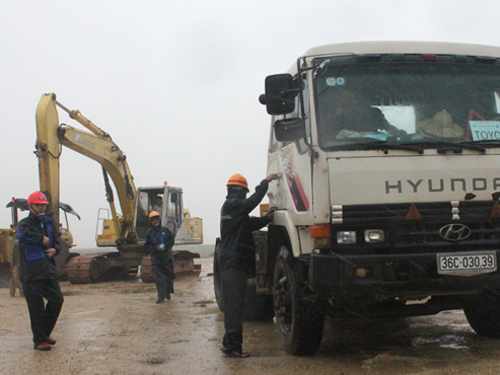|
Experts have
warned that
While
Dr. Nguyen Dong Hai, an oil and gas
expert, has warned that
A lot of hydropower plants were
licensed just within a short time, before the local authorities and people
realized the dangerous devastation of the plants on the land and local
people’s lives.
Meanwhile, the petrochemistry surely
affects the environment.
“We have to offer big investment
incentives to attract investors to the projects. What profit will we obtain
from this?” Hai questioned.
At present, only the Dung Quat Oil
Refinery uses
Le Dang Doanh, a well-known
economist, has also asked the government to think carefully before deciding
to develop the petrochemistry industry. He said it’s necessary to anticipate
the problems to be arisen, including the environment pollution, the lack of
input materials and the world’s trend for clean energy sources.
“Only when the investors submit the
reports about the projects’ scale, capacity, consumption market, input
material supply sources and the impacts on the socio-economic development,
will it be clear if the projects are feasible,” Doanh said.
“Tens of petrochemical projects were
initiated over the last tens of years. However, Dung Quat has been the only
operational oil refinery so far. And it has been facing a lot of challenges,”
he added.
Economists have also given warnings
about the oversupply all over the world in the near future, which would lead to
the selling price decreases, thus meaning the low profits for oil refineries.
The Wall Street Journal has reported
that a series of oil refineries have been built on the Persian Gulf and
Three other refineries with the
capacity of 400,000 barrels per day are being built in the Gulf, including
the one in Ruwais in UAE, which would become operational by 2015, another in
Yanbu by 2017, and the one in Jazan on the Red Sea side.
Saudi Aramco, Kuwait Petroleum Corp,
Qatar Petroleum International, Rosneft (Russian) và PdVSA (Venezuela) all are
building big capacity oil refineries in China. Chinese companies are also
moving ahead with similar plans.
Mai Chi,
|
Thứ Tư, 23 tháng 10, 2013
Đăng ký:
Đăng Nhận xét (Atom)

Không có nhận xét nào:
Đăng nhận xét